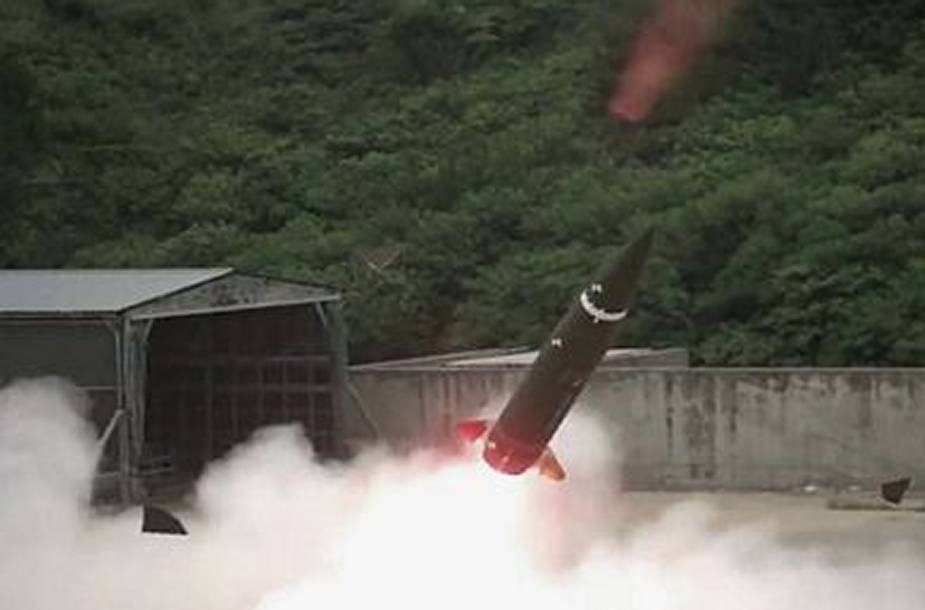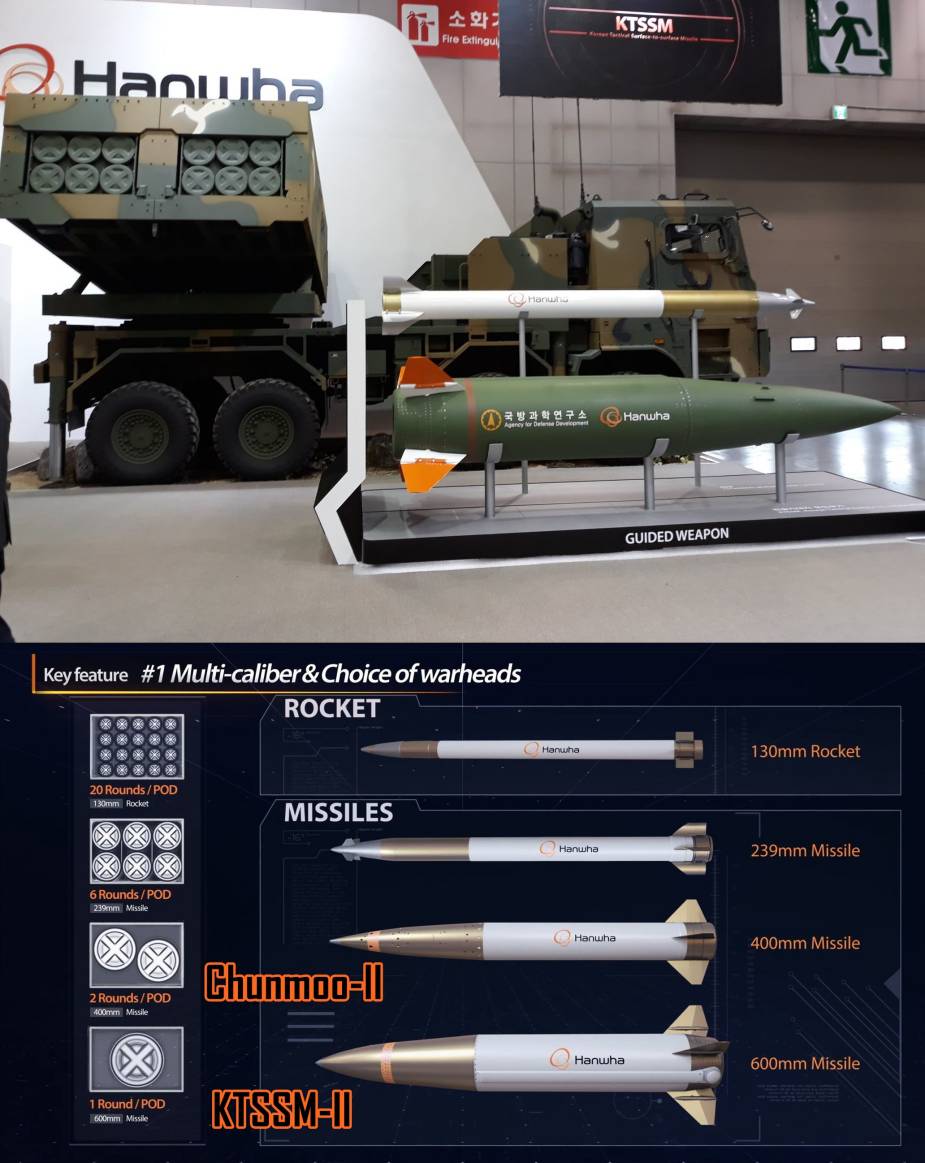Breaking news
South Korea speeding up KTSSM-II missile development for Chunmoo K239 MLRS.
In a tweet posted on May 11, Mason reports that over 200 Chunmoo K239 MLRS units are already deployed by the ROK Army. The South Korean government announced the mass production of the KTSSM-II on May 10 and the speeding up of the KTSSM-II development.
Follow Army Recognition on Google News at this link

Firing of a KTSSM-II missile (Picture source: South Korean MoD)
As recalled by 21stcenturyasianarmsrace.com, the Chunmoo MLRS transporter is an armored 8x8 truck. Its primary purpose is to provide protection for the crew, allowing them to remain inside the vehicle while it is firing. The launcher is mounted on the truck bed and is designed to pivot. To ensure stability during munition firing, the vehicle is equipped with four hydraulic jacks or "legs." Unlike mid-20th century rocket artillery systems, the Chunmoo's launcher deviates from the norm by featuring separate pods, similar to the Brazilian Astros and the M270 MLRS. This design allows for faster reloading of the weapon system, as new pods containing munitions can be inserted using a crane on a separate vehicle.
While Hanwha Defense serves as the primary contractor for the Chunmoo, its corporate parent, Hanwha Corporation, takes responsibility for manufacturing the ammunition used by the system. The ammunition is available in three different calibers: "light" unguided 130mm rockets, heavier 239mm accurized rockets, and 400mm accurized rockets. Hanwha refers to the larger calibers as missiles due to their GPS guidance and fin-stabilized flight capabilities. The Chunmoo's launcher can hold up to 40 130mm rockets, with 20 in each pod. However, it can only accommodate twelve 239mm munitions and four 400mm munitions at a time. Additionally, each pod can be loaded with a short-range ballistic missile similar to the US-made ATACMS.
Despite its impressive features, the Chunmoo faces significant challenges as a South Korean defense export. The United States' strong alliance network and diplomatic influence give the Lockheed Martin M142 HIMARS a a competitive advantage in the market, despite the Chunmoo's ability to carry more firepower. Furthermore, Israel's success in developing medium and long-range rocket artillery, along with its ability to modify these systems for end-users, poses a threat to the Chunmoo's global prospects. Additionally, countries that already operate Chinese and Soviet rocket artillery systems are likely to stick with their existing platforms out of habit. Norinco's SR5 rocket artillery system, which offers a wider range of munition choices, has further compounded the Chunmoo's challenges, as Norinco has delivered multiple batches of the SR5 system in less than four years.
Two variants of the KTSSM fired by the Chunmoo MLRS —the KTSSM-I and KTSSM-II—will arm a new South Korean counter-artillery brigade in October 2018. The KTSSM missiles were developed as a rapid-response missile to enable counterbattery fire against North Korean artillery emplacements, multiple rocket launch systems (MRL), and short-range ballistic missiles, including close-range solid-fuel missiles like the KN02 Toksa.
The KTSSM missiles are designed to allow the South Korean military to effectively neutralize scores of North Korean artillery and ballistic missile launchers north of the demilitarized zone at the start of a conflict. With a range of more than 120 kilometers, KTSSM-I can range most of North Korea’s conventional artillery systems. According to South Korean sources, KTSSM boasts a circular error probable of just two meters, making it a highly precise missile. The system is designed to have some capability to penetrate hardened targets.

Rockets and missiles that the Chunmoo MLRS can fire (Picture source: Twitter account of Mason)
Defense News May 2023



















